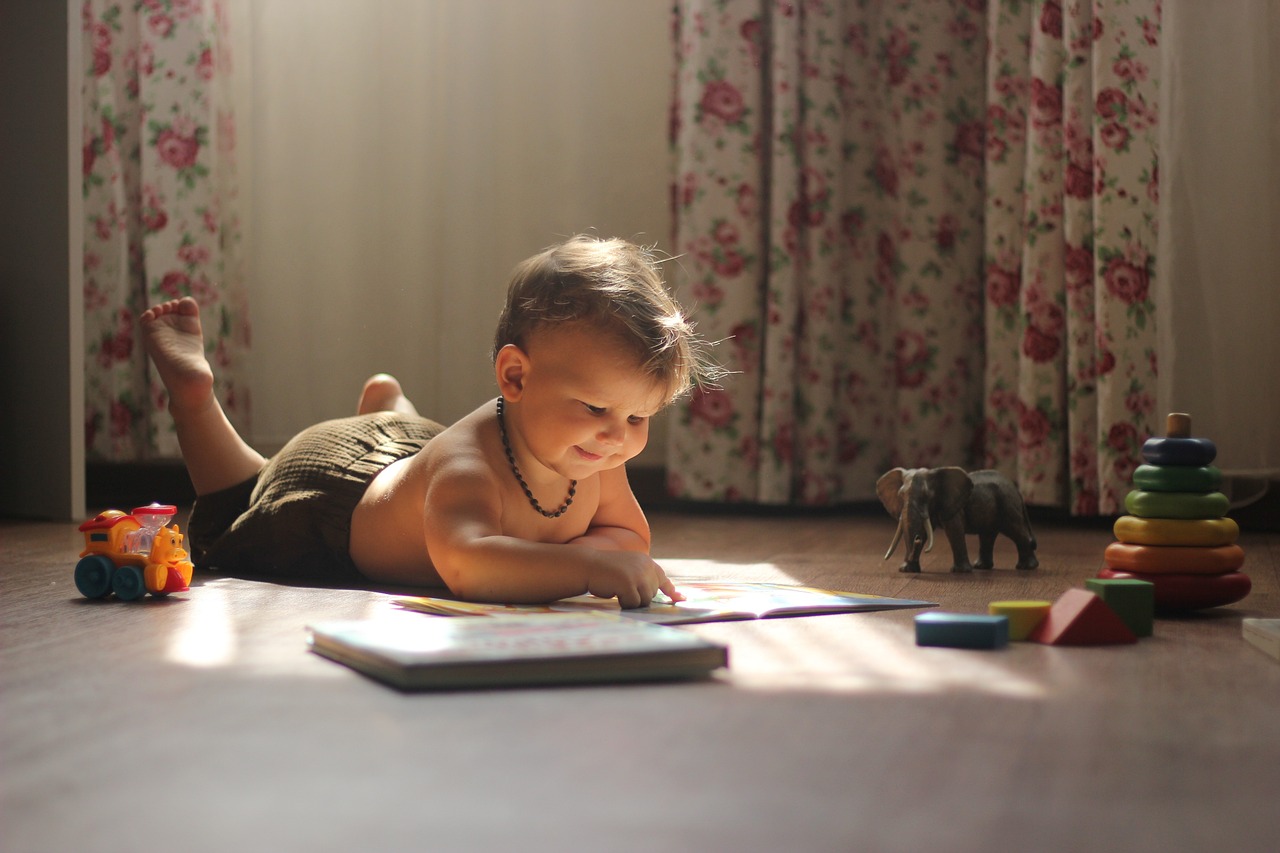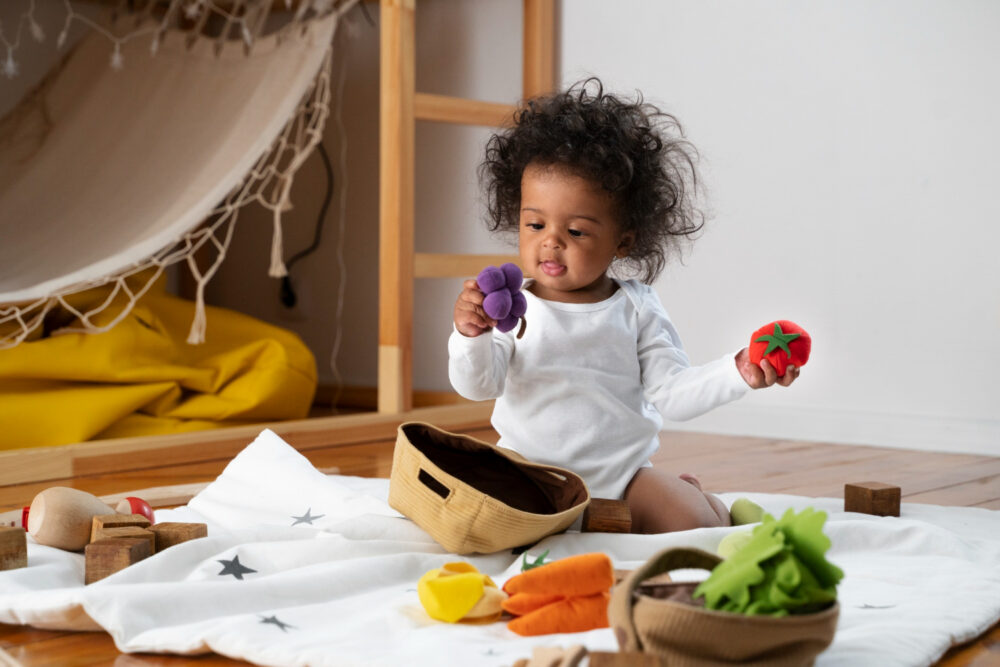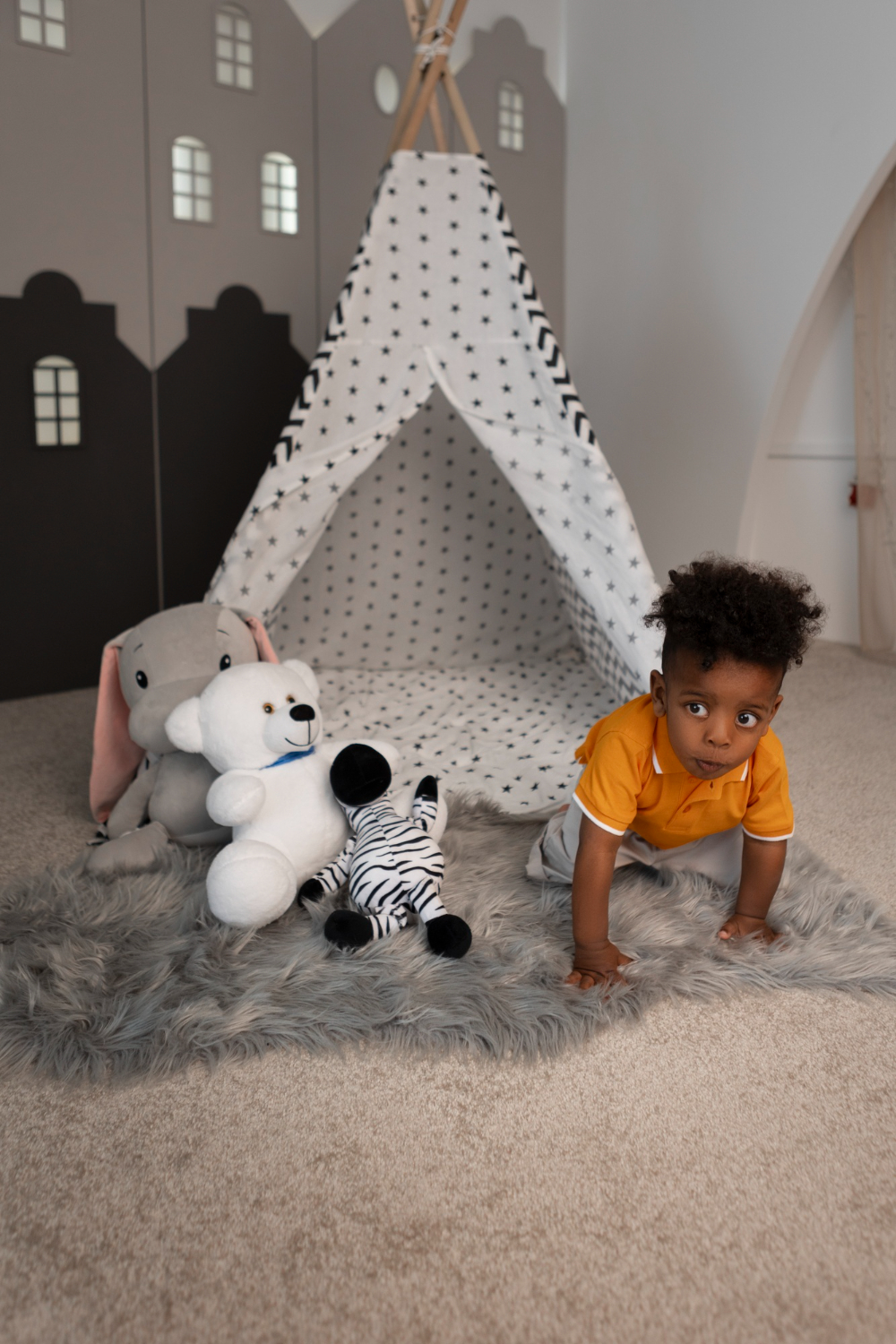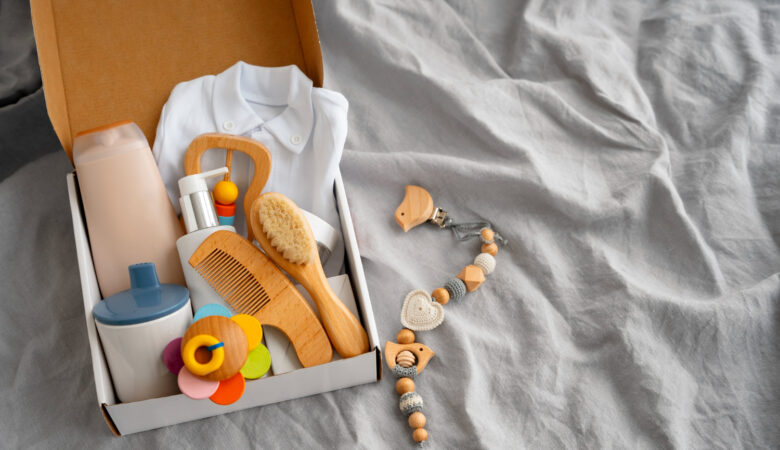Innocently, I have always assumed a baby play space meant bright plastic toys, flashy lights, and a never-ending pile of stuffed animals. But when I started looking into Montessori principles, I realized play doesn’t have to be overwhelming, overstimulating, or expensive.
A Montessori-inspired play space is simple, inviting, and designed to encourage a baby’s natural curiosity. It focuses on less but better—fewer toys, more open-ended play, and a space that grows with the child. The best part? You don’t need a big budget or a dedicated playroom to make it work.
Here’s how to create a beautiful, functional Montessori-inspired play space without spending a fortune.
1. Choose a Calm and Defined Play Area
Montessori spaces are thoughtfully designed, but they don’t have to be large. A small corner of your living room, a section of the nursery, or even a cozy spot in your bedroom can work.
Look for a quiet area with good natural light where your baby can move freely. Keep the space uncluttered and organized, creating an environment that feels calm rather than chaotic.
A simple play mat or a soft rug on the floor provides a comfortable spot for tummy time, rolling, and crawling. If possible, set up the area near a low shelf where you can store and rotate toys easily.
2. Keep Toys Minimal and Purposeful
Montessori encourages quality over quantity. Babies don’t need piles of toys—just a few thoughtfully chosen ones that support their development.
Instead of battery-operated toys that entertain passively, look for options that allow your baby to explore, manipulate, and discover. Some affordable Montessori-friendly toys include:
- Wooden rattles and teethers
- Simple stacking cups
- Soft fabric balls
- A wooden baby gym with hanging objects
- Black-and-white contrast cards for newborns
- A mirror at floor level for self-discovery
If you’re on a budget, thrift stores and local buy/sell groups often have great secondhand finds. Everyday household objects—like wooden spoons, fabric scraps, and empty containers—can also double as engaging play materials.
3. Use Open Shelving for Easy Access
Montessori play spaces use low, open shelves rather than bins or toy boxes. This makes toys visible and accessible, encouraging babies to reach for what interests them.
A simple, budget-friendly solution is using a small bookshelf, a wooden crate, or even a repurposed shoe rack to display a few toys at a time. Store extras elsewhere and rotate toys weekly to keep things fresh.
The key is to present toys neatly—placing them on trays, baskets, or directly on the shelf. This keeps the space organized and helps babies develop a sense of order from an early age.
4. Incorporate Natural Materials
Montessori emphasizes natural materials because they provide real textures, weight, and sensory feedback that plastic toys often lack.
Look for:
- Wood: Wooden rattles, stacking rings, or blocks
- Fabric: Soft cloth books, cotton play mats, or muslin scarves
- Metal: Small bells or stainless steel bowls for sensory play
You don’t need to buy everything new. Repurposing household items—like a wooden spoon for grasping or a silk scarf for peek-a-boo—works just as well.
5. Create a Safe Space for Movement
From birth, babies explore the world through movement. A Montessori-inspired play space allows them to move freely and safely without unnecessary restrictions like jumpers or walkers.
Consider adding:
- A floor mirror at baby’s level, helping them observe their own movements
- A soft mat or low cushions for rolling and crawling practice
- A b (like a secured wooden dowel) for early pulling-up exercises
By making movement part of playtime, babies build strength, coordination, and independence naturally.
6. Keep Décor Simple and Calm
Unlike traditional playrooms filled with bright colors and flashing toys, Montessori spaces use neutral tones, soft lighting, and uncluttered walls.
Instead of overwhelming patterns, opt for:
- A few nature-themed prints or black-and-white baby visualson the wall
- A cozy reading cornerwith a couple of baby-friendly books
- A small potted plant(out of reach) to introduce natural elements
A calming environment helps babies feel secure and engaged rather than overstimulated.
7. Follow Your Baby’s Interests
The beauty of Montessori is that it’s not a rigid system—it’s about observing your baby and adjusting to their needs.
If they show interest in grasping, offer different textured objects. If they enjoy looking at themselves, place the mirror where they can reach it. If they start exploring movement, provide space for crawling and climbing.
By paying attention to what sparks their curiosity, you create a play space that truly supports their growth.

Image by Катерина Кучеренко from Pixabay
Final Thoughts
Creating a Montessori-inspired baby play space doesn’t have to be expensive or complicated. With a few thoughtful choices—like open shelving, natural materials, and a clutter-free setup—you can design a space that encourages exploration, independence, and joyful learning.
The goal isn’t perfection—it’s providing an environment where your baby feels safe, engaged, and free to discover the world at their own pace. And the best part? You can do it all on a budget, using what you already have.










Leave a Reply